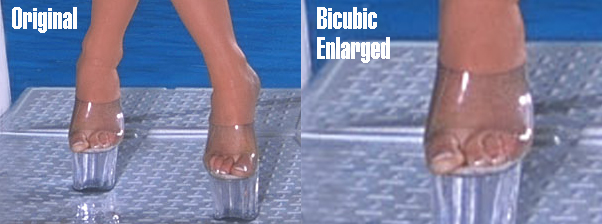Most all photo-editing software available today will claim to include AI based upscaling as part of their repertoire. AI upscaling uses artificial intelligence algorithms to improve the resolution of an image by using pixel data from similar looking images that the software might have seen in past and then use that information to provide a more intelligent choice of what pixel content to fill in when the enlargement takes place, instead of using the more traditional bicubic interpolation approach to mathematically compute the missing pixel information based on the values of the neighbouring pixels. You can see that when using bicubic interpolation the data basically stays the same as you are simply using the neighbouring pixels to figure out what’s missing. Nothing which could improve the perceived quality has been done to the pixels per se.

Let’s see on the other hand some of the power of AI upscaling as applied to a nice portrait of Veronika …. in this case the upscaling has done a phenomenal job at improving the overall quality of the image as “faces” are likely easy things for the AI upscaling algorithms to handle as the software would have had many “faces” to draw data from.

You’ll see in this case the AI algorithms did a phenomenal job to enhance Veronika’s face. However, all is not always perfect we have discovered. We can only assume that if no AI useful data is available for the area of interest being enlarged then the algorithm appears to use “something” which more than often results in bizarre artifacts being generated. Here’s an example of the same area of Veronika’s feet which were enlarged using bicubic interpolation above but now using an AI algorithm …. we really can’t figure out if Veronika still has toes 😉

It appears that when faces are involved, the AI upscale results are great, but certain other features still require some fine tuning.
